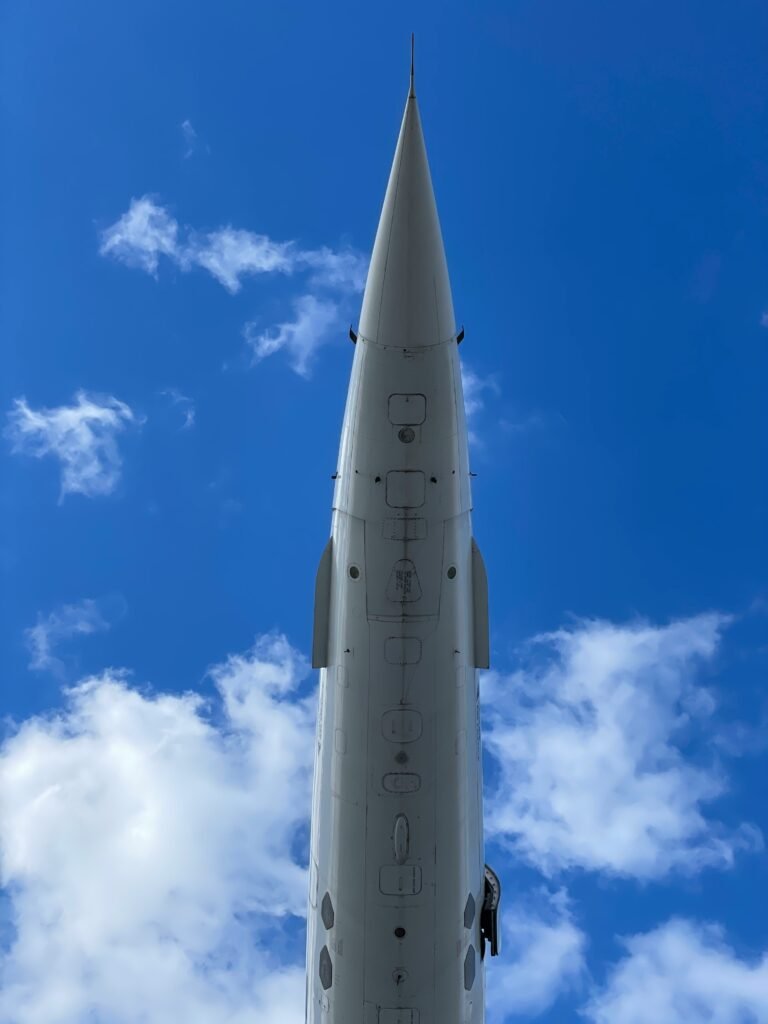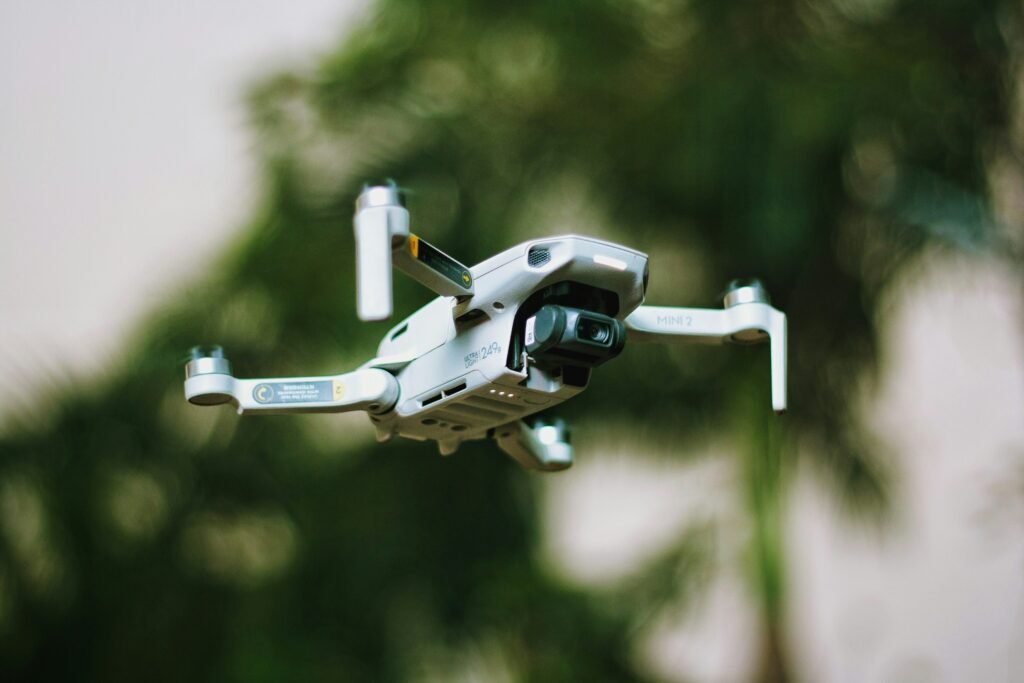
Introduction to Hypersonic Technology
Hypersonic technology refers to aircraft, missiles, and other vehicles capable of traveling at speeds greater than Mach 5, or five times the speed of sound, which translates to approximately 3,800 miles per hour (6,100 kilometers per hour). This realm of advanced movement offers significant advantages in modern warfare, making hypersonic systems critical for military applications. Unlike subsonic and supersonic speeds, which reach up to Mach 1 and Mach 5 respectively, hypersonic speeds present unique challenges and opportunities for defense strategies globally.
The fundamental principle of hypersonic propulsion involves the ability to maintain high speeds while maneuvering through the atmosphere. This is achieved through various innovative technologies, including air-breathing engines and advanced materials that can withstand extreme temperatures created by atmospheric friction at such velocities. The development of such technologies allows hypersonic missiles to engage targets with an enhanced degree of precision and speed, reducing the reaction time available to defensive systems.
With the capabilities of hypersonic weaponry, military doctrines are undergoing transformations across the globe. Nations are investing heavily in these technologies to enhance their strategic deterrence and strike capabilities. Hypersonic missiles can travel at unpredictable trajectories, making them significantly harder to intercept than traditional ballistic missiles. Consequently, the possession of hypersonic capabilities can shift the balance of power in military confrontations, leading to a reconsideration of defense systems worldwide.
As countries strive to establish superiority in hypersonic technology, the implications extend beyond military strength. Diplomatic relations and defense partnerships can be influenced as states evaluate the potential threats posed by hypersonic advancements. Overall, hypersonic technology is not merely a technical development; it represents a paradigm shift in how nations approach warfare and security in an ever-evolving geopolitical landscape.
Overview of Iran’s Fattah Missile
The Fattah hypersonic missile represents a significant advancement in Iran’s missile capabilities, reflecting the nation’s focus on enhancing its defense technology. The name “Fattah,” meaning “conqueror” in Persian, is indicative of Iran’s aspirations for military prowess and deterrence. This missile is designed to operate at speeds exceeding Mach 5, which enables it to evade current missile defense systems, presenting a challenge for adversaries while asserting Iran’s position in the region.
In terms of design, the Fattah missile incorporates advanced aerodynamics and propulsion systems, along with features aimed at improving its accuracy and striking power. Notably, it possesses maneuverability that allows it to alter its trajectory mid-flight, further complicating interception efforts. The combination of these characteristics positions the Fattah missile as a formidable component of Iran’s arsenal, capable of delivering a variety of payloads ranging from conventional warheads to potentially nuclear ones.
Iran has been developing hypersonic missile technology as part of its broader defense strategy, which emphasizes self-sufficiency and deterrence against perceived threats. The introduction of the Fattah missile aligns with Iran’s goals of asserting its sovereignty and responding to military pressures from both regional and global powers. The launch of this missile indicates Iran’s commitment to expanding its defense capabilities in a way that serves its national interests. Furthermore, the Fattah missile embodies the intersection of technological innovation and military strategy, reinforcing the country’s objective to maintain a credible defense force amidst ongoing geopolitical tension.
Technical Specifications of the Fattah Missile
The Fattah hypersonic missile represents a significant advancement in missile technology, characterized by its unprecedented speed, range, and payload capacity. This missile can reportedly reach speeds greater than Mach 5, a threshold that places it within the realm of hypersonic flight. Operating at such velocities allows the Fattah to evade conventional defense systems, thus presenting a formidable challenge to adversaries.
In terms of range, the Fattah missile is designed to strike targets over considerable distances, estimated to exceed 1,400 kilometers. This extended operational radius enables strategic versatility, permitting strikes from beyond the range of traditional missile defense systems. The ability to engage a variety of targets while maintaining low flight profiles reinforces its tactical advantages.
A critical component of the Fattah’s design is its advanced guidance system, which features a combination of inertial navigation and terminal guidance capabilities. This hybrid approach enhances the missile’s accuracy, ensuring that it can effectively strike designated targets. The integration of modern sensor technologies aids in real-time target acquisition, making the missile highly effective in dynamic combat scenarios.
Furthermore, the materials used in the construction of the Fattah missile are noteworthy. The use of lightweight composites and heat-resistant alloys plays a pivotal role in its hypersonic performance, enabling the missile to withstand the extreme thermal and aerodynamic stresses associated with high-speed flight. The engineering innovations behind the Fattah missile signify an important leap in Iran’s missile development program, reflecting a commitment to maintaining technological parity in the regional defense landscape.
Thus, the Fattah hypersonic missile embodies a complex interplay of speed, range, guidance systems, and material science, making it a critical asset in Iran’s military arsenal.
Development History of the Fattah Hypersonic Missile
The Fattah hypersonic missile represents a significant advancement in military technology, reflecting Iran’s ongoing efforts to enhance its defense capabilities in a rapidly changing geopolitical environment. The development of the Fattah missile can be traced back to the early 2010s, in response to perceived threats from both regional adversaries and external powers. Iran’s military strategy has increasingly relied on advanced missile technology, with the Fattah serving as a crucial component in its repertoire.
One of the key milestones in the Fattah’s development was the establishment of the Iranian Aerospace Industries Organization, which spearheaded research and development in missile technology. In conjunction with various academic institutions and military organizations, Iran invested heavily in the necessary technologies, including materials science and propulsion systems, which laid the groundwork for the Fattah missile’s capabilities. By 2021, reports emerged that Iran had successfully developed the missile, showcasing its ability to travel at speeds exceeding Mach 5, thus qualifying it as a hypersonic weapon.
The geopolitical landscape during this period played a significant role in shaping the Fattah’s evolution. Iran’s relations with Western nations, coupled with increasing tensions in the Middle East, accelerated its desire to augment its defensive and offensive capabilities. Consequently, the Fattah hypersonic missile was designed not only to deter adversaries but also to enhance Iran’s strategic posture in the region.
Testing and evaluation of the Fattah missile commenced in mid-2022, and subsequent trials demonstrated its effectiveness and precision. Iranian officials have heralded this weapon as a game-changer, capable of circumventing traditional missile defense systems. As Iran continues to refine its technology, the Fattah hypersonic missile stands at the forefront of its military ambitions, exemplifying a blend of innovative engineering and strategic necessity.
Strategic Implications of Fattah Technology
The introduction of the Fattah hypersonic missile technology represents a significant milestone in Iran’s military capabilities, bringing profound strategic implications for the region and beyond. Primarily, the development of such advanced missile technology enhances Iran’s ability to project power, thereby altering the existing power dynamics in the Middle East. The hypersonic speeds at which the Fattah can operate make it exceedingly difficult for traditional missile defense systems to intercept, thereby providing Iran with a tactical advantage and potentially emboldening its defense strategies.
Additionally, the advent of the Fattah missile technology serves as a catalyst for a re-evaluation of military strategies among neighboring countries and adversarial nations. Countries like Saudi Arabia and Israel, which view Iran’s military advancements with skepticism, may be prompted to bolster their own defense initiatives. This could lead to an arms race in the region, further complicating diplomatic relations and destabilizing an already volatile geopolitical landscape. The potential for escalated tensions underscores the need for renewed dialogue and diplomatic engagement among regional stakeholders.
Furthermore, the emergence of the Fattah hypersonic missile technology could have repercussions on existing arms control treaties. The development of such innovative weaponry may challenge the parameters established by strategic arms limitation frameworks, as nations seek to secure their territories against hypersonic threats. This situation raises fundamental questions about the efficacy and adaptability of existing treaties, particularly those focusing on conventional arms control, as they might become increasingly obsolete in the face of such rapid technological advancements.
In summary, the strategic implications of Iran’s Fattah hypersonic missile technology extend beyond mere military enhancements, influencing regional stability, military posturing, and international arms treaties.
Comparative Analysis with Other Hypersonic Missiles
In the contemporary landscape of military technology, hypersonic missiles represent a significant advancement in strategic deterrence capabilities. Among these systems, Iran’s Fattah missile has emerged as a noteworthy contender, warranting a comparison with hypersonic technologies developed by other nations, specifically Russia, China, and the United States. Each of these countries has invested substantial resources into refining both the design and operational effectiveness of their hypersonic weaponry.
Russia’s Avangard missile system stands as one of the most advanced hypersonic vehicles, utilizing a glider technology that allows it to reach speeds of Mach 20. This system is designed to evade contemporary missile defense systems through high velocity and maneuverability. In contrast, China’s DF-ZF hypersonic glide vehicle reportedly operates at Mach 5 and employs a similar concept of reentry, emphasizing speed and unpredictable trajectory. The United States has developed several hypersonic projects, such as the AGM-183 ARRW, which uses a booster to accelerate a glider to hypersonic speeds. Each system reflects a unique approach to hypersonic missile technology, emphasizing factors such as speed, accuracy, and tactical application.
The Fattah missile, while touted for its advanced capabilities, is often viewed within the context of regional security dynamics rather than as a direct replacement for Western or Eastern hypersonic platforms. Key differences arise in propulsion methods, targeting mechanisms, and launch platforms. While Western hypersonic systems lean towards air-launch capabilities, the Fattah missile is believed to leverage ground-based platforms, which could influence its operational range and strategic deployment. Moreover, the differing levels of international cooperation and technological expertise also set these systems apart.
In conclusion, the comparative analysis of Iran’s Fattah hypersonic missile alongside Russian, Chinese, and American systems highlights both similarities and distinct strategies inherent in modern hypersonic warfare. The ongoing developments in this domain signal a transformative era in military capabilities that will continue to evolve with each nation’s priorities and technological advancements.
Challenges in Hypersonic Missile Technology
The development of hypersonic missile technology, such as Iran’s Fattah missile, comes with a series of formidable challenges that can impact its effectiveness and deployment. One of the primary obstacles is manufacturing. The complexity involved in creating components that can withstand the extreme conditions of hypersonic flight, including intense heat and pressure, requires advanced materials and precision engineering. Iran must invest significant resources into research and development to overcome these scientific and technical hurdles, which can strain its existing industrial capabilities.
Another crucial aspect is the accuracy of hypersonic missiles. Achieving high precision in targeting while maintaining high speed is a significant technical challenge. The guidance systems utilized must be capable of rapid data processing and real-time adjustments, which can be cumbersome and costly. In addition, Russia and China, leading nations in hypersonic missile technology, have sophisticated systems that may render Iranian missiles less effective unless substantial advancements are made. This necessitates a continuous improvement approach to technology and innovations in missile guidance and control systems.
Moreover, potential countermeasures employed by adversarial nations can further hinder the effectiveness of Iran’s hypersonic missile capabilities. Countries with advanced missile defense systems may develop strategies to intercept or mitigate the impacts of hypersonic threats, putting additional pressure on Iran to enhance its systems or adopt stealth technologies. Lastly, the economic implications of sustaining such an advanced military program cannot be overlooked. The costs associated with research, development, and production of hypersonic missile technology may divert resources from other critical areas within Iran, creating potential vulnerabilities in both economic and military capabilities.
International Reactions and Partnerships
The unveiling and operationalization of Iran’s Fattah hypersonic missile technology has elicited a range of reactions from the international community, highlighting the strategic implications of this advanced weaponry. Many nations have expressed concern over Iran’s missile advancements, especially given the potential for the Fattah missile to evade existing missile defense systems. This has heightened fears among regional and global powers regarding the stability of the Middle East and beyond.
Countries such as the United States, Israel, and several European nations have condemned Iran’s missile developments. The U.S. government reiterated its commitment to countering threats posed by Iran’s military capabilities, arguing that the proliferation of hypersonic technology could destabilize the region and provoke an arms race. In response to these developments, the U.S. has hinted at the possibility of implementing new sanctions aimed at limiting Iran’s access to critical technologies and funding necessary for further missile research and development.
On the other hand, some nations view Iran’s missile advancements as a legitimate assertion of sovereignty and a means of deterrence against perceived aggressors. Countries with close ties to Iran, particularly those in the Eastern bloc, have offered support and possibly even collaborations in missile technology development. Such partnerships could enhance Iran’s capabilities and complicate international efforts to limit its military ambitions. Moreover, Iran may seek to strengthen alliances with countries that are also interested in developing hypersonic technology, thus creating a network of strategic partnerships that could influence geopolitical dynamics.
As the international community continues to grapple with the ramifications of Iran’s Fattah hypersonic missile, diplomatic engagement remains essential. The balance between imposing sanctions and fostering dialogue could ultimately shape the future of missile technology development in Iran and its broader implications for global security.
Future Prospects for Fattah and Hypersonic Technology
The Fattah hypersonic missile represents a significant leap in missile technology, marking Iran’s entry into a competitive field where nations are rapidly advancing their capabilities. As hypersonic technology evolves, it is expected that Iran will continue to invest and innovate, enhancing the Fattah’s accuracy, range, and maneuverability. This could position Iran as a formidable military power in the Middle East, potentially changing the balance of power in the region.
One of the critical areas of future development for the Fattah missile may involve improvements in guidance systems. Enhanced navigation technologies could provide greater targeting precision, making it a more effective deterrent against adversaries. Alongside this, Iran may seek to explore advanced propulsion systems, which could expand the operational range of the Fattah missile, allowing it to target a broader array of strategic installations beyond its current capabilities.
However, the advancement of hypersonic technology is not without its challenges. As Iran develops the Fattah missile, it will likely encounter technological hurdles, including difficulties in maintaining stability at hypersonic speeds and managing heat resistance during re-entry. Furthermore, international sanctions and diplomatic pressures could affect Iran’s access to necessary materials and technological partnerships, potentially stymying progress in this domain.
On a broader scale, the evolution of hypersonic technology will continue to be influenced by global military trends. Various nations are racing to develop and deploy hypersonic missiles, leading to a potential arms race. Militaries around the world are investing in research to counter hypersonic threats, which could prompt defensive innovations and new strategies for missile defense systems. The future landscape of hypersonic technology, including the trajectory of the Fattah missile, will be shaped by the interplay of these dynamics.



